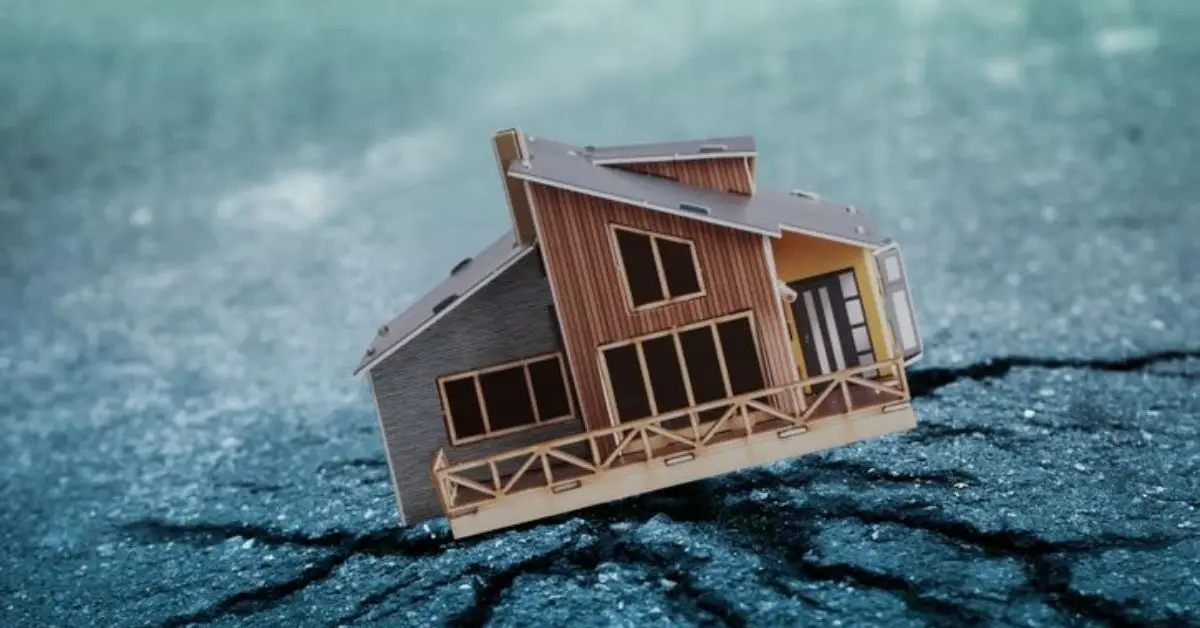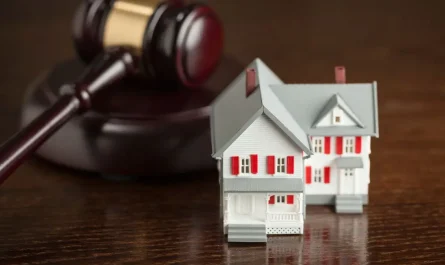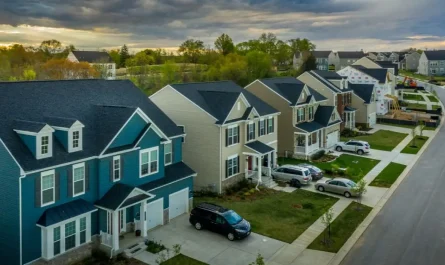Home Insurance Exclusions: 7 Costly Surprises You Need to Know
I thought my insurance would take care of everything when I purchased my first house. I believed that a storm, a burst pipe, or even an unforeseen catastrophe was just what the policy was intended to cover. However, like many homeowners, I discovered later that the top page’s bolded text isn’t the complete picture.
In actuality, home insurance does shield you against some significant risks, but it also excludes a startling number of circumstances that could result in thousands of dollars in losses. Usually, these gaps remain unnoticed until something really occurs, at which point it is too late to close them.
I’ll go over seven of the most frequent things that home insurance doesn’t cover in this post. I want to help you identify these blind spots before they become costly errors, not to frighten you. By the end, you’ll know exactly where you could require basic tweaks or additional coverage.
I would like to know when you last went over the exclusions in your policy.
1. Flooding and Sewer/Drain Backups
Most individuals think insurance will cover them when they think of water damage. I used to believe that my policy would pay for my basement if it was destroyed by flooding. The catch is that flood damage is not covered by ordinary home insurance. This implies that a single severe storm could leave you with a hefty charge.
The fact that so few homes really have separate flood coverage makes this much riskier. Only only 6% of households in the United States have flood insurance, according to AP News. Consider the fact that millions of families reside in flood-prone areas without any insurance.
It’s not only floods, either.Unless you have expressly included a water-damage endorsement to your policy, sewer or drain backups—such as when heavy rains force dirty water into your home—are also not covered. It’s one of those things that many people only find out about when they’re in the thick of things.
When looking for a new house, you should think about more than just the neighborhood or pricing; you need also think about long-term value retention and potential hazards like flooding. You can make a decision that will support you financially and in terms of your insurance requirements by being aware of the telltale signals that a home will hold its worth.
Here are some things to be aware of:
-
Flooding
Not covered by default. You need a separate flood insurance policy. -
Sewer/Drain backups
Excluded unless you buy an endorsement (often just a small add-on, but can save you thousands). -
Regular water leaks vs. sudden bursts
A slow leak usually isn t covered, but a sudden pipe burst often is.
Now is the perfect opportunity to evaluate your policy for these water-related gaps if you haven’t already. Consider this: If my basement flooded tomorrow, could I afford to pay for a repair that would cost more than $20,000? If not, it’s worthwhile to look into additional security.
2. Earthquakes, Landslides & Sinkholes
Let’s discuss another significant concern that frequently goes unnoticed. A typical home insurance policy does not cover natural disasters like sinkholes that engulf a portion of your yard, landslides that destroy your foundation, or earthquakes that shake your walls.
I’ve seen homeowners believe that insurance will aid if the ground shifts and their house cracks. Unfortunately, it won’t. Most people don’t even consider it until a disaster occurs, unless they reside in a state like Florida or California where this is well known.
The truth is as follows:
-
Earthquakes
Always excluded unless you purchase separate earthquake insurance. -
Landslides
Seen as earth movement, so not included in regular coverage. -
Sinkholes
Surprisingly, most policies don t cover them either. Some states require separate sinkhole insurance.
The problematic part is that, while earthquake coverage is available, it typically has large deductibles and premiums that vary greatly depending on where you reside. It’s something to think about carefully if you live in an area with even a slight risk of earthquakes.
My recommendation? Examine your local dangers even if you don’t reside in California. Significant structural repairs may be necessary as a result of a small sinkhole in your neighborhood or minor earthquake activity. Asking your insurance about add-ons up front is preferable to assuming you’re covered.
3. Mold and Pest Infestations (Including Bed Bugs, Termites, Rodents)
One of those insidious issues that begins modestly and then abruptly takes over walls, ceilings, or entire rooms is mold. The annoying thing is that insurance typically won’t pay for it unless there is an unexpected event, like a busted pipe. You’re on your own if the mold developed as a result of a slow leak that you chose to ignore or simply regular moisture.
Pests belong to the same group.Home insurance considers termites, rodents, and bed bugs to be maintenance issues, despite the fact that they wreak thousands of dollars’ worth of damage annually. This implies that you won’t be compensated if termites eat through your beams or mice eat up your wiring.
The breakdown is as follows:
-
Mold from sudden water damage
May be covered. -
Mold from long-term leaks or humidity
Usually not covered. -
Pests (termites, rodents, bed bugs)
Excluded from standard policies. -
Accidental animal damage
(like a raccoon smashing through your attic) Sometimes covered, but you need to confirm with your insurer.
My recommendation? Remain proactive. Here, your best defense is prompt repairs and routine inspections. If a leak or insect problem is not fixed within a few weeks, thousands of dollars in damage may be left undiscovered.
4. Wear-and-Tear, Neglect & Maintenance Issues
The fact that insurance does not cover items that deteriorate over time is one of the biggest surprises for homeowners. Leakage from a 25-year-old roof is regarded as normal wear and tear rather than an unexpected loss. The same is true for deteriorating foundations, obsolete electrical wires, and pipes.
I’ve saw claims rejected outright because the insurer determined that the issue resulted from carelessness or poor maintenance. The unpleasant reality is that, generally speaking, insurance isn’t meant to replace the things you should be taking care of.
What is usually not mentioned is as follows:
-
Aging roofs
that leak due to old shingles. -
Plumbing issues
from years of corrosion or poor maintenance. -
Foundation cracks
caused by long-term settling. -
Gradual wear
on systems like HVAC or electrical.
Another major hazard?automatic renewals.Many of us simply let our home insurance to renew annually without verifying that the coverage still corresponds to the worth of the house. This can leave you underinsured, as MoneyWeek notes, particularly if your risk profile has altered due to inflation, remodeling, or increased rebuild prices.
Don’t wait to find these gaps until a claim has been rejected. Examine your home and your coverage once a year. Maintaining documentation of renovations and repairs not only safeguards your house but also improves your case in the event that you have to make a claim.
Purchasing a property involves more than just receiving the keys; it also entails budgeting for upkeep, repairs, and other expenses. That s why understanding thebenefits of buying a homecan help you see the bigger picture, beyond just the monthly insurance premium.
5. Home-Based Businesses & High-Value Collections
A lot of us run side hustles or even full-fledged businesses from home these days. But here s the part most people miss:your standard homeowners policy doesn t fully protect business property. In fact, coverage is usually capped at around $2,500 barely enough to replace a laptop, let alone an entire setup. According toPolicygenius, you ll need a business endorsement or a separate policy if you want proper protection.
It s not just business owners who face this problem. If you keepexpensive jewelry, art, or collectiblesat home, your insurance probably has strict payout limits on those too. For example, a policy might only cover $1,500 worth of jewelry, even if you own a $10,000 ring.
The breakdown is as follows:
-
Business equipment
(computers, tools, inventory) Limited coverage unless you add an endorsement. -
Home-based liability
(client visits, shipments, accidents) Usually excluded from standard policies. -
High-value items
(jewelry, fine art, coin collections) Need special riders or scheduled coverage.
If you ve invested years into building a home office, or if you have valuables you couldn t easily replace, don t rely on default limits. Ask your insurer about endorsements it s cheaper than finding out too late that your claim won t cover the loss.
6. Intentional Damage and Certain Dog Breeds
Another area where homeowners often get blindsided isliability coverage. You probably assume if something happens at your house, you re covered but that s not always the case.
First, insurance willnever cover intentional damage. If a resident of your home damages the property on purpose whether out of anger, carelessness, or fraud you won t see a dime from your insurer.
Second, pets can create another hidden gap. Many people don t realize thatcertain dog breeds are excludedfrom liability coverage because insurers consider them high risk. That means if your dog happens to fall on that list and bites someone, you could be on the hook for medical bills and legal costs.
Here s the quick summary:
-
Intentional acts
Always excluded, no exceptions. -
Dog liability
Some breeds may be excluded; you ll need to check your policy carefully. -
Accidents by kids, guests, or pets
Covered only if they re not on the insurer s exclusion list.
If you have a dog, or if you re worried about any liability scenario, this is one section of your policy you should read word for word. It could save you from an ugly surprise later.
7. Coverage Loopholes, Auto-Renewal Pitfalls, and Policy Gaps
Here s the thing about insurance sometimes you think you re protected, but small details can leave you exposed. One of the biggest traps isauto-renewal. Most of us just let our policies renew each year without really checking what s inside. The problem? Your home s value changes, building costs go up, and maybe you ve done renovations or upgrades. If your coverage hasn t kept pace, you could be badly underinsured.
Another common loophole comes frommissed add-ons. For example, you may have upgraded your home office or bought expensive jewelry, but if you never told your insurer, those items might not be fully protected. Insurance companies won t automatically adjust your policy you have to stay on top of it.
Many first-time buyers don t realize how coverage limits and loan structures can affect their long-term financial safety net. Before auto-renewing any policy, it s wise to review financing basics like thetop home loans every first-time buyer should knowto make sure your coverage aligns with your mortgage and property value.
Here are the biggest risks to watch out for:
-
Auto-renewal complacency
Policy keeps rolling over without matching rising rebuild costs. -
Renovations or upgrades
New additions might not be covered unless you update your insurer. -
Value shifts
Inflation or rising labor/material costs can leave coverage limits outdated. -
Missed endorsements
High-value items or business assets may be excluded if not declared.
The lesson is simple:don t set it and forget it.Review your policy every year, update your coverage when life changes, and ask questions before assuming you re safe. That small effort can be the difference between a smooth claim and a financial disaster.
Don t Wait for a Claim to Discover the Gaps
Home insurance is meant to give peace of mind, but the truth is, it only works if you understand what it doesn t cover. Floods, ground movement, mold, pests, wear and tear, home businesses, valuables, intentional damage, even policy loopholes these blind spots can turn into financial shocks if you re not proactive.
The smart move isn t just buying a policy it smanaging it like the investment it is.Review your coverage every year, talk with your insurer, and add endorsements where your life demands it. A little attention now can save you from a massive loss later.
I d love to hear from you have you ever faced a surprise insurance denial, or caught a gap just in time?Drop your story in the comments so others can learn from it.
And if you want more real-world guides that help you protect your home and money, visitBuild Like Newfor fresh insights that go beyond the fine print.
Disclaimer: This article is for informational purposes only and should not be taken as legal or financial advice. Insurance policies vary, so always review your own policy documents and consult a licensed insurance professional before making decisions.
Table of Contents
-
1. Flooding and Sewer/Drain Backups
-
2. Earthquakes, Landslides & Sinkholes
-
3. Mold and Pest Infestations (Including Bed Bugs, Termites, Rodents)
-
4. Wear-and-Tear, Neglect & Maintenance Issues
-
5. Home-Based Businesses & High-Value Collections
-
6. Intentional Damage and Certain Dog Breeds
-
7. Coverage Loopholes, Auto-Renewal Pitfalls, and Policy Gaps
-
Don t Wait for a Claim to Discover the Gaps




